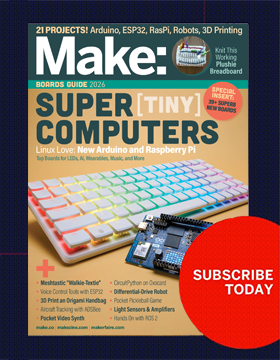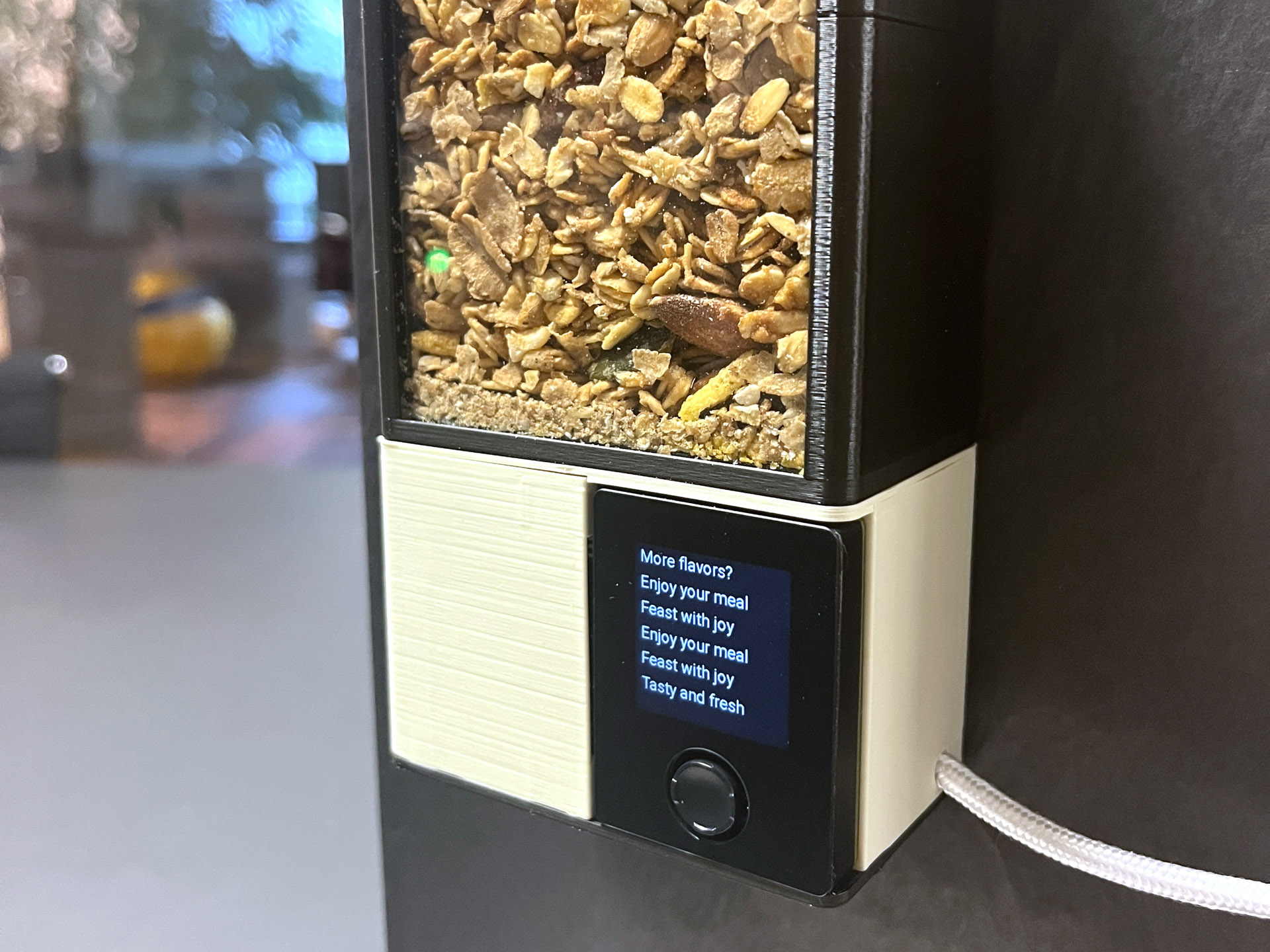
We are building a small dispenser for all kinds of cereals. Of course, this useful helper can also be used to dispense small portions of M&Ms and other sweet treats, which should quickly win the hearts of the other family members. The interesting thing is that we only need a few parts: A servo, glass panes, a few screws, 3D-printed parts, and a controller.
This project contains a servo-powered dispenser mechanism consisting of a bucket which can eject small portions of the loaded material. The housing is made of glass, and can of course be made as large as required in your own projects. We have opted for a compact housing shape here. As soon as everything is assembled, the device can be brought to life via a microcontroller. At the push of a button, the desired food is patiently portioned into the bowl, with a side order of mechanical noises.
A particular challenge of this project was using a commercially available servo for the dispenser mechanism. This makes the project easier, and also cheaper. If we exclude the microcontroller, the components cost less than $20!
Once again, we are using the Oxocard Connect in this project. The special feature here is that the microcontroller is not permanently installed in the device. We use the cartridge slot to make it modular, so that the Oxocard itself can be used for multiple projects.

Servos are more maker-friendly
If you want to build something with motors as a maker, you quickly face various challenges. Motors need power, which immediately raises the question of the power source. How should they be dimensioned? They also cannot be controlled directly with a microcontroller; additional motor controller electronics are required to convert the digital signal from our computer into movement. Then we have the problem of the gear ratio and the axes. There are countless variants of both. This always overwhelms me. I’ve bought a few motors before, but they usually don’t fit exactly when I want to make something.
Servos are much easier. They can be controlled digitally directly via pulse-width modulation (PWM). There are also standard servo sizes that various manufacturers adhere to to some extent, and the mechanical transmission takes place via levers, whereby various sizes are supplied. Servos have many advantages if you want to try something out. In our project we are using an SG92R. This is an inexpensive micro servo which we’re pushing to the limit, but it works quite well. One of them is included in the Innovator Kit, though it is worth getting several. These are available from various suppliers for little money. They can be used in a variety of ways and have a good price/performance ratio.
Mechanical structure
There were various setbacks and challenges during the construction of this model.
Certainly the transportation of the material is the number one problem. There are various ways of portioning bulk material. In our case, we are dealing with bulky, grainy and crumbly material. The products also differ massively. Generally speaking, the smaller the pieces, the better it works. For example, I was able to transport Rice Crispies reliably and without any major blockages. With the Crunch cereals with nuts, there were a few unusual cracking and crunching noises that worried me. However, the machine survived these too. But blockages cannot be ruled out and sometimes you have to use your fingers or a screwdriver to help a little.

Flaky and lumpy material, so-called bulk goods, are transported in industry using screw conveyors or shakers, among other things. In our case, we use a mixture of a gravity feeder and a bucket. I was also inspired by a ball valve design. This is the mechanism often used in more modern water mixers. The bucket is designed so that there is no center bar, allowing us to transport as much volume as possible.
After many tests, it turned out that the size of the bucket is crucial. It must of course be larger than the largest piece to be transported. However, the mechanism works better if the ratio is 1:1.5 or even 1:2. The more irregular the pieces are, the more often blockages occur.
Large, misshapen pieces also tend to get caught in each other so that gravity alone is no longer sufficient to transport the pieces into the cup. The solution here was to position the axle in such a way that the bucket’s blade edges penetrate the bulk material, allowing it to be moved. So we scrape around a bit until the “mass” flows again.



